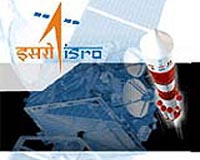 |
Pittsburgh PA (SPX) Jul 07, 2010 Researchers based at the University of Pittsburgh have developed a method for predicting dust and sandstorms that uses infrared satellite images to determine when conditions are ripe for the destructive phenomena, a technique that could be implemented globally and that the research team used to forecast a 2008 New Mexico dust storm-the area's largest in decades-two days beforehand. Thermal and visible images of New Mexico's White Sands Dune Field captured by NASA's Earth-orbiting ASTER (Advanced Spaceborne Thermal Emission and Reflectance Radiometer) instrument reliably indicated when soil moisture levels were low enough to result in a dust storm, the team recently reported in the Journal of Geophysical Research Earth Surface. Lead author Stephen Scheidt, a research associate in Pitt's Department of Geology and Planetary Science; Michael Ramsey, a Pitt associate professor of geology and planetary science and member of NASA's ASTER science team; and Nicholas Lancaster of Nevada's Desert Research Institute further determined that this approach could be expanded into a worldwide system to monitor areas prone to dust storms or to track drought in regions threatened by desertification. The group analyzed day- and night-time images of White Sands ASTER captured between May 2000 and March 2008. Unlike microwave satellite instruments typically used to observe arid regions, ASTER can collect high-resolution data that allow small-scale surface details to be observed in various wavelengths, from visible light to thermal infrared. By studying thermal infrared images of moisture content and albedo-or sunlight reflected by the ground-at White Sands, the team found that the sand became drier and more reflective until it was a mass of loose sediment susceptible to strong winds. ASTER images from the project illustrate the increase in albedo and decrease in soil moisture preceding the 2008 White Sands dust storm. The photographs are from November 2002 to March 12, 2008, two days before the sandstorm. In the first set of pictures, the bright, white area representing albedo has expanded to an area of several kilometers by March 12, 2008. Meanwhile, the corresponding thermal image-as shown in panel 7 of the second image set-shows the driest area (in red) covering roughly the same area. The third image is of the March 14, 2008, dust storm taken by NASA's Moderate Resolution Imaging Spectroradiometer with the dust plume emanating from a darkened area that corresponds with the driest areas indicated by ASTER. Wind speed during the storm averaged between 10 and 15 miles per hour with gusts of more than 50 mph, Scheidt noted in the group's paper. The researchers plan to build on their work at White Sands by observing arid and semi-arid areas with different soil characteristics, particularly albedo, which is uniquely high at White Sands. They also suggested that monitoring desert areas via ASTER can be further validated with field measurements of soil density, moisture, and composition.
Share This Article With Planet Earth
Related Links Geology and Planetary Science School of Arts and Sciences Earth Observation News - Suppiliers, Technology and Application
 Saudi Scientists To Visit India To Seek ISRO Assistance
Saudi Scientists To Visit India To Seek ISRO AssistanceDelhi (PTI) Jul 07, 2010 A delegation of scientists from Saudi Arabia are set to visit India to ink an agreement with space agency ISRO for boosting cooperation that will help the country develop an indigenous space programme. The Saudi delegation, comprising of the country's leading scientists will visit the India Space Research Organisation later this month. The agreement to boost cooperation in space scie ... read more |
|
| The content herein, unless otherwise known to be public domain, are Copyright 1995-2010 - SpaceDaily. AFP and UPI Wire Stories are copyright Agence France-Presse and United Press International. ESA Portal Reports are copyright European Space Agency. All NASA sourced material is public domain. Additional copyrights may apply in whole or part to other bona fide parties. Advertising does not imply endorsement,agreement or approval of any opinions, statements or information provided by SpaceDaily on any Web page published or hosted by SpaceDaily. Privacy Statement |